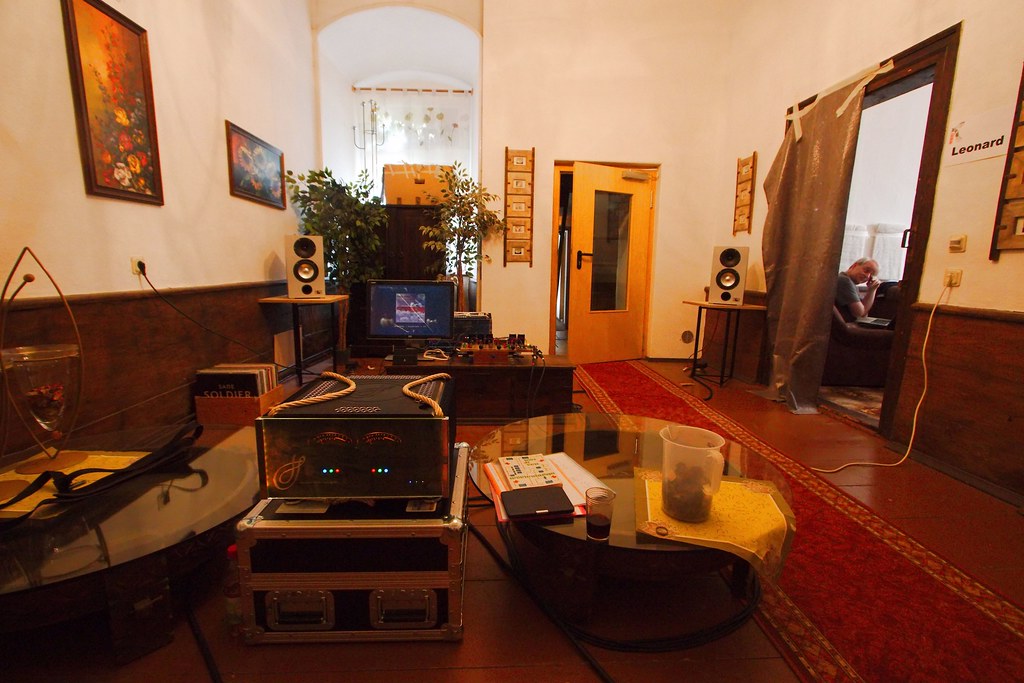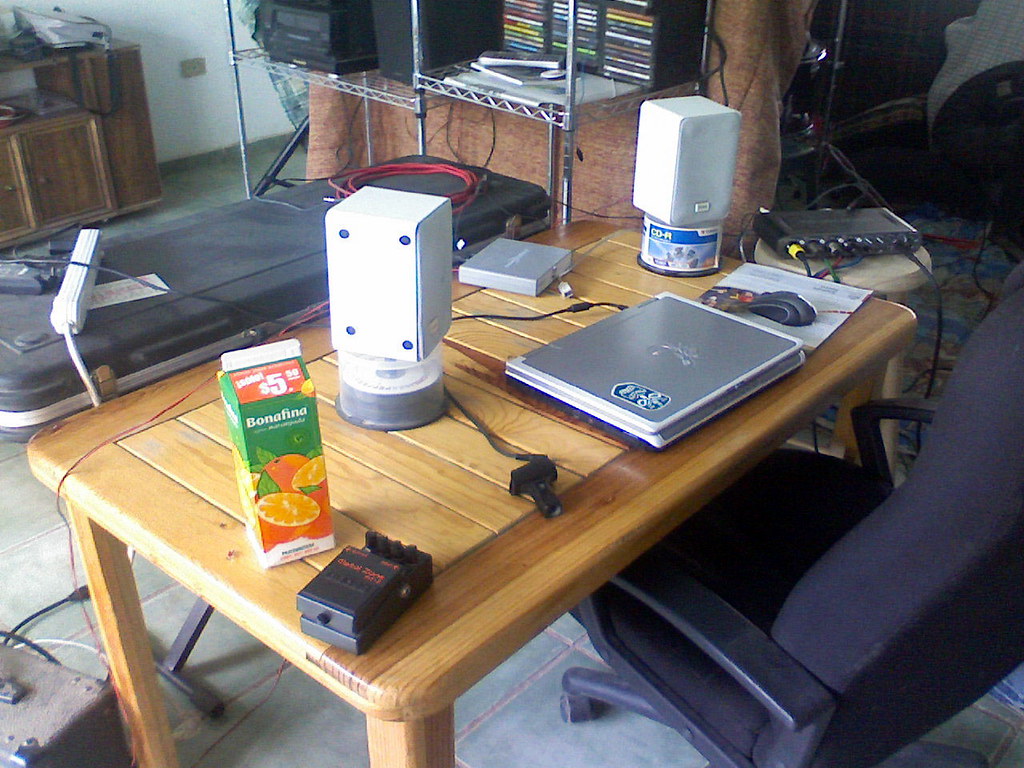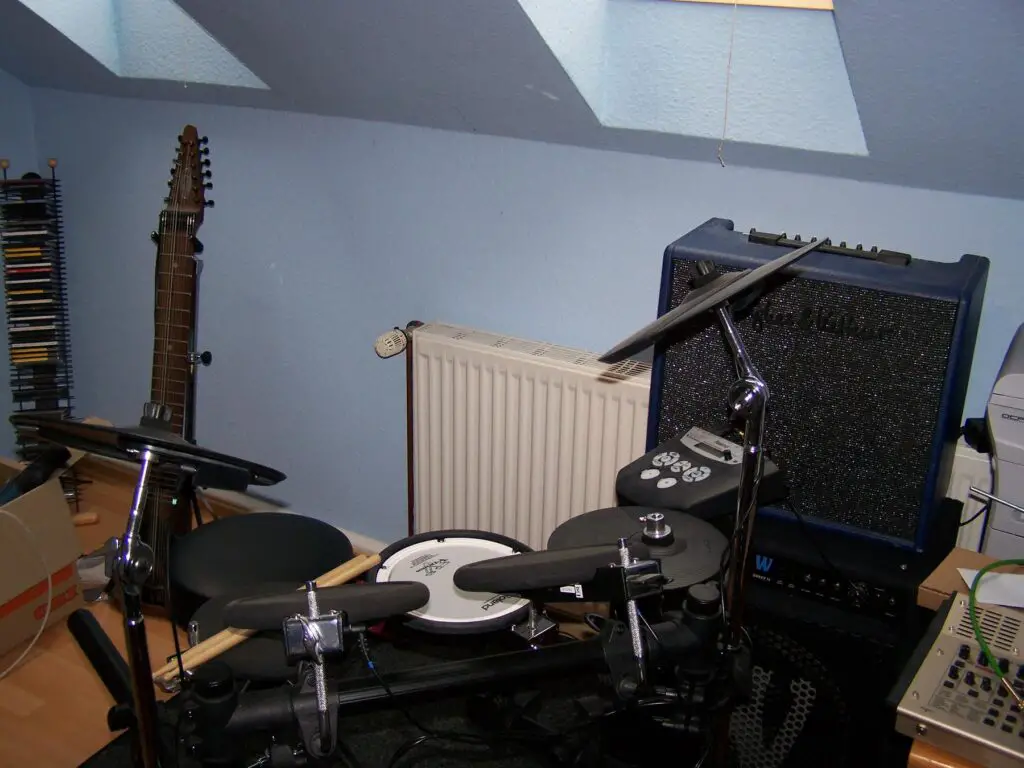Are you looking to create professional-quality music from the comfort of your own home? Look no further than a music production workstation. A music production workstation is a comprehensive setup that includes all the necessary components for recording, editing, and producing music. In this article, we’ll explore the best music production workstations for your home recording studio, including the essential components you’ll need to get started. Whether you’re a beginner or a seasoned pro, a music production workstation is an essential tool for taking your music to the next level.
Table of Contents

Components of a Music Production Workstation
A music production workstation is composed of several components that work together to create high-quality music. These components include:
Digital Audio Workstations (DAWs)
A digital audio workstation (DAW) is the software used to record, edit, and mix music. There are many DAWs available, each with its own unique features and workflow. Some popular DAWs include:
- *Ableton Live*: A popular DAW for electronic music production and live performance.
- *Logic Pro X*: A professional-grade DAW for Mac users.
- *Pro Tools*: A widely used DAW in the music industry, known for its powerful editing and mixing capabilities.
- *FL Studio*: A popular DAW for hip-hop and electronic music production.
While Ableton Live, Logic Pro X, Pro Tools, and FL Studio are all popular DAWs, each has its own unique features and workflow. For example, Ableton Live is known for its session view and live performance capabilities, while Logic Pro X is a professional-grade DAW with a wide range of built-in instruments and effects. Pro Tools is widely used in the music industry for its powerful editing and mixing capabilities, while FL Studio is popular for hip-hop and electronic music production.
MIDI Controllers
A MIDI controller is a device used to control virtual instruments and other software within a DAW. MIDI controllers come in many forms, including keyboards, drum pads, and faders. Some popular MIDI controllers include:
- *Akai MPK Mini*: A compact MIDI keyboard with drum pads and assignable knobs.
- *Novation Launchpad*: A grid-based MIDI controller for triggering clips and loops.
- *Native Instruments Maschine*: A hybrid MIDI controller and standalone groovebox for beatmaking.
In addition to the Akai MPK Mini, Novation Launchpad, and Native Instruments Maschine, there are many other MIDI controllers available, each with its own unique features and workflow. For example, the Arturia KeyLab is a popular MIDI keyboard with a wide range of assignable knobs and faders, while the Ableton Push is a grid-based MIDI controller designed specifically for use with Ableton Live.
Audio Interfaces
An audio interface is a device used to connect microphones, instruments, and other audio sources to a computer. Audio interfaces typically have built-in preamps and converters for high-quality recording. Some popular audio interfaces include:
- *Focusrite Scarlett 2i2*: A popular entry-level audio interface with two inputs and two outputs.
- *Universal Audio Apollo Twin*: A high-end audio interface with built-in DSP processing for running plugins.
- *PreSonus Studio 192*: A versatile audio interface with eight inputs and outputs, plus built-in DSP effects.
While the Focusrite Scarlett 2i2, Universal Audio Apollo Twin, and PreSonus Studio 192 are all popular audio interfaces, there are many other options available, each with its own unique features and workflow. For example, the Apogee Duet is a high-end audio interface with built-in DSP processing for running plugins, while the MOTU UltraLite-mk4 is a versatile audio interface with a wide range of inputs and outputs.
Studio Monitors
Studio monitors are specialized speakers designed for accurate and transparent sound reproduction. They are essential for mixing and mastering music. Some popular studio monitors include:
- *KRK Rokit 5*: A popular entry-level studio monitor with a balanced sound.
- *Yamaha HS8*: A professional-grade studio monitor with a flat frequency response.
- *Genelec 8351B*: A high-end studio monitor with advanced DSP processing for room correction.
While the KRK Rokit 5, Yamaha HS8, and Genelec 8351B are all popular studio monitors, there are many other options available, each with its own unique features and workflow. For example, the JBL 305P MkII is a popular entry-level studio monitor with a balanced sound, while the Focal Shape 65 is a high-end studio monitor with advanced DSP processing for room correction.
Microphones
Microphones are used to capture sound from instruments, vocals, and other sources. There are many types of microphones, each with its own unique characteristics. Some popular microphones include:
- *Shure SM7B*: A dynamic microphone commonly used for vocals and broadcasting.
- *AKG C414*: A versatile condenser microphone used for recording a variety of instruments.
- *Sennheiser e906*: A dynamic microphone commonly used for recording guitar amps and drums.
While the Shure SM7B, AKG C414, and Sennheiser e906 are all popular microphones, there are many other options available, each with its own unique characteristics. For example, the Audio-Technica AT4053b is a versatile condenser microphone used for recording a variety of instruments, while the Electro-Voice RE20 is a dynamic microphone commonly used for broadcasting and voiceover work.
When choosing components for your music production workstation, it is important to consider your specific needs and workflow. Each component plays a crucial role in the music production process, and choosing the right ones can make a significant difference in the quality of your recordings.

Choosing the Right Music Production Workstation
Choosing the right music production workstation can be a daunting task, but it is crucial to ensure that you have the right tools to produce high-quality music. Here are some factors to consider when choosing a music production workstation:
Budget
The cost of music production workstations can vary greatly, from a few hundred dollars to tens of thousands of dollars. It is important to determine your budget before making any purchases. Keep in mind that investing in high-quality equipment can save you money in the long run by reducing the need for upgrades or replacements.
Workflow
Consider your preferred workflow and the types of music you want to produce. Some digital audio workstations (DAWs) and MIDI controllers are better suited for certain genres and workflows. For example, if you are producing electronic dance music (EDM), you may want a DAW that has a strong emphasis on beat-making and sequencing.
Compatibility
Make sure all components of your music production workstation are compatible with each other and with your computer. This includes checking the operating system requirements for your DAW and audio interface, as well as ensuring that your MIDI controller is compatible with your chosen software.
Room Acoustics
The acoustics of your recording space can greatly impact the quality of your recordings. Consider the size and shape of your room, as well as any acoustic treatment you may need to improve the sound quality. Choose studio monitors and microphones that are appropriate for your room size and shape, and consider investing in acoustic treatment to reduce unwanted reflections and improve the overall sound quality.
By considering these factors, you can choose a music production workstation that is tailored to your needs and budget, and that will help you produce high-quality music.

Setting Up a Home Recording Studio
Setting up a home recording studio can be a daunting task, but with the right approach, it can be a rewarding experience. Here are some tips for setting up a home recording studio:
Choose the Right Room
Choosing the right room is crucial for setting up a home recording studio. Look for a room with good acoustics and minimal background noise. Avoid rooms with hard surfaces, such as tile or hardwood floors, as they can cause unwanted reflections and echo. Instead, choose a room with carpet or rugs to absorb sound. Additionally, consider the size of the room, as larger rooms can cause more reverb and echo.
Treat the Room
Acoustic treatment is essential for minimizing reflections and improving the sound quality of your recordings. You can use acoustic panels, bass traps, and diffusers to absorb and scatter sound waves. Place acoustic panels on the walls and ceiling to reduce reflections and echo. Bass traps can be placed in corners to absorb low-frequency sound waves. Diffusers can be used to scatter sound waves and create a more natural sound.
Invest in Quality Equipment
Investing in high-quality equipment is essential for achieving good sound quality. Consider purchasing a music production workstation, studio monitors, an audio interface, a microphone, and a MIDI controller. Look for equipment that is durable and reliable, as it will last longer and provide better sound quality.
Organize Your Workspace
Keeping your workspace organized and free of clutter is essential for improving your workflow. Use cable ties and cable management systems to keep cables organized and out of the way. Keep your equipment within reach and use a desk or table that is the right height for you. Additionally, consider using a monitor stand to improve your posture and reduce eye strain.
Learn the Basics
Learning the basics of recording, editing, and mixing is essential for getting the most out of your music production workstation. Take the time to learn how to use your equipment and software properly. Watch tutorials and read articles to learn new techniques and improve your skills. Practice regularly to improve your workflow and achieve better results.

Music Production Workstation vs. Traditional Recording Studio
When it comes to recording music, there are two main options: a music production workstation or a traditional recording studio. While both have their advantages and disadvantages, a music production workstation offers several benefits over a traditional recording studio.
Advantages of a Music Production Workstation
Cost
One of the biggest advantages of a music production workstation is cost. A music production workstation can be much more affordable than a traditional recording studio. With a music production workstation, you can get started with just a computer, a digital audio workstation (DAW), and a few other pieces of equipment.
Flexibility
Another advantage of a music production workstation is flexibility. A music production workstation can be set up in any room and can be easily moved if necessary. This means you can record music from the comfort of your own home, without having to worry about renting a space or traveling to a studio.
Control
With a music production workstation, you have complete control over the recording, editing, and mixing process. This means you can experiment with different sounds and techniques until you get the perfect mix. You can also work at your own pace, without having to worry about studio time constraints.
Learning
A music production workstation allows you to learn the basics of recording, editing, and mixing at your own pace. This means you can take the time to learn the software and equipment, without feeling rushed or pressured.
Disadvantages of a Music Production Workstation
Sound Quality
One of the main disadvantages of a music production workstation is achieving professional-grade sound quality. While it is possible to achieve high-quality sound with a music production workstation, it can be more difficult than with a traditional recording studio. This is because traditional recording studios are designed to provide optimal sound quality, with soundproofing, acoustic treatment, and high-end equipment.
Collaboration
Collaborating with other musicians and producers can be more difficult with a music production workstation. While it is possible to collaborate remotely, it can be more challenging to work together in real-time. This is because traditional recording studios provide a space for musicians and producers to work together, share ideas, and collaborate on projects.
In conclusion, while a music production workstation offers several advantages over a traditional recording studio, it is important to consider the disadvantages as well. Ultimately, the choice between a music production workstation and a traditional recording studio will depend on your specific needs and goals as a musician or producer.
Insider Tips for Optimizing Your Music Production Workstation:
Experienced music producers have shared some insider tips to help you get the most out of your music production workstation:
- Invest in high-quality studio monitors: High-quality studio monitors are essential for accurate and transparent mixes. Take the time to properly set them up in your room to get the best results. Consider investing in acoustic treatment to further improve the sound quality of your recordings.
- Experiment with different DAWs and workflows: Don’t be afraid to experiment with different digital audio workstations (DAWs) and workflows. What works for one producer may not work for another, so find what works best for you and your music.
- Properly treat your recording space: Properly treating your recording space with acoustic treatment can help minimize reflections and improve the sound quality of your recordings. Consider investing in bass traps, diffusers, and absorbers to create a more controlled recording environment.
By following these insider tips, you can optimize your music production workstation and take your music production to the next level.
Conclusion
In conclusion, a music production workstation is a crucial investment for any aspiring music producer. With the right components, you can create professional-grade music from the comfort of your own home. By choosing the right digital audio workstation (DAW), MIDI controller, audio interface, studio monitors, and microphones, you can optimize your music production workstation for the best possible sound quality.
Setting up your home recording studio can be a daunting task, but with the right tips and best practices, you can create a space that is optimized for your music production needs. Remember to avoid common mistakes such as poor acoustic treatment and improper cable management.
While a music production workstation may not be a substitute for a traditional recording studio, it offers many advantages such as cost-effectiveness, convenience, and flexibility. With the right software and hardware options, you can achieve professional-grade sound quality without breaking the bank.
In conclusion, investing in a music production workstation is a wise decision for any serious music producer. It can help you take your music production to the next level and achieve your creative goals. Check out our other content for more tips and recommendations on music production workstations and home recording studios.


